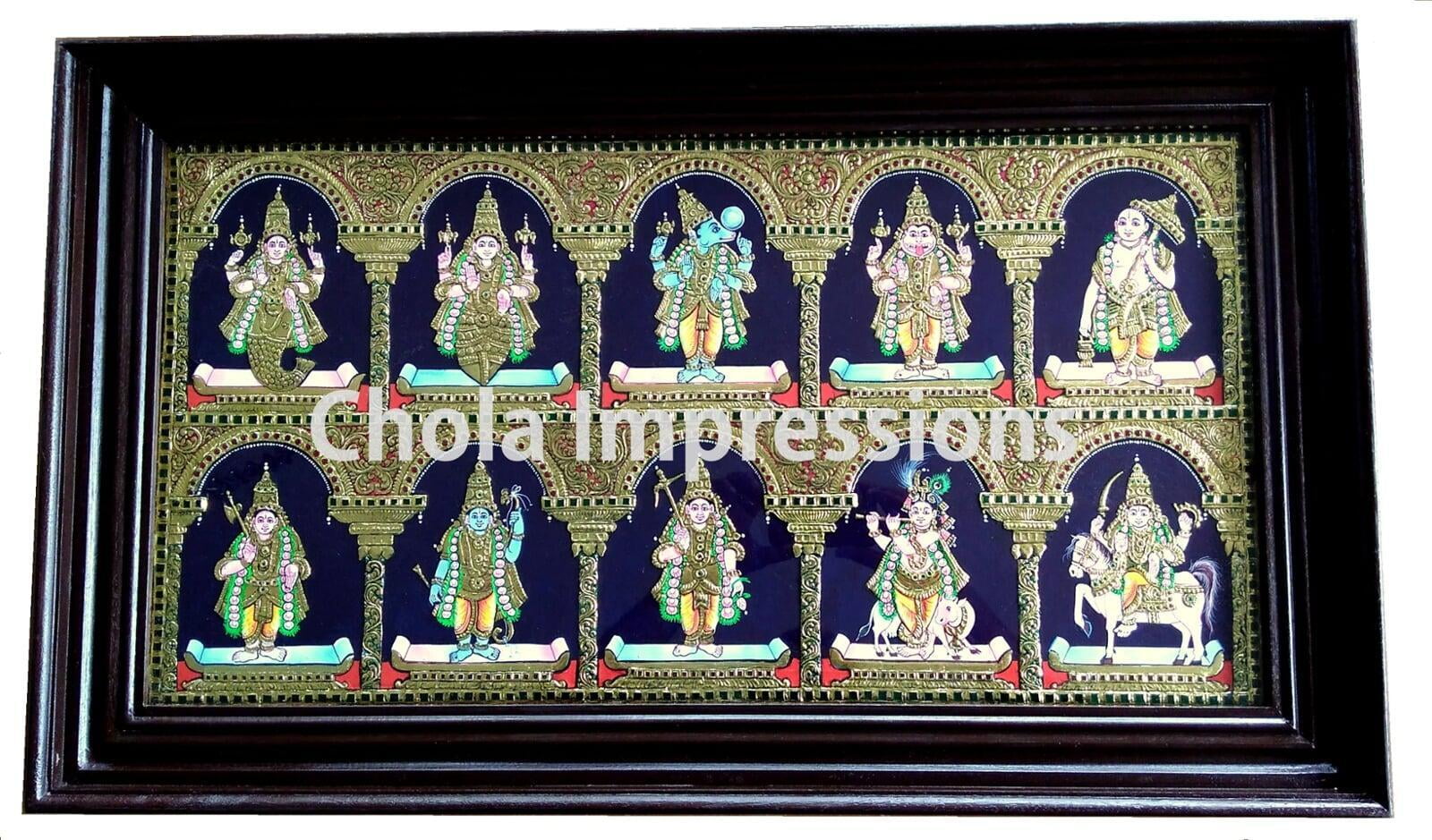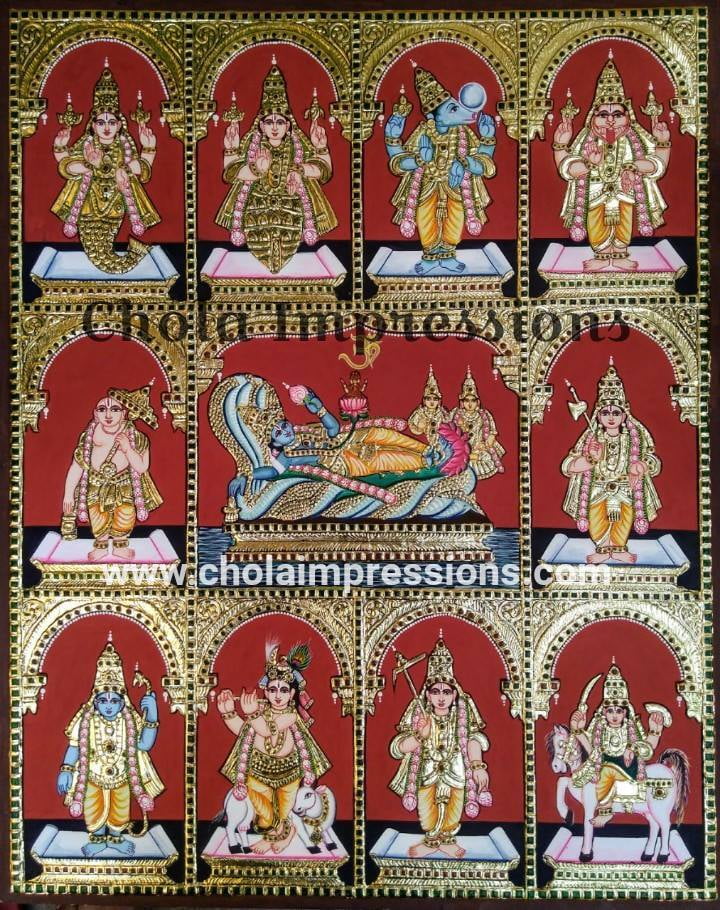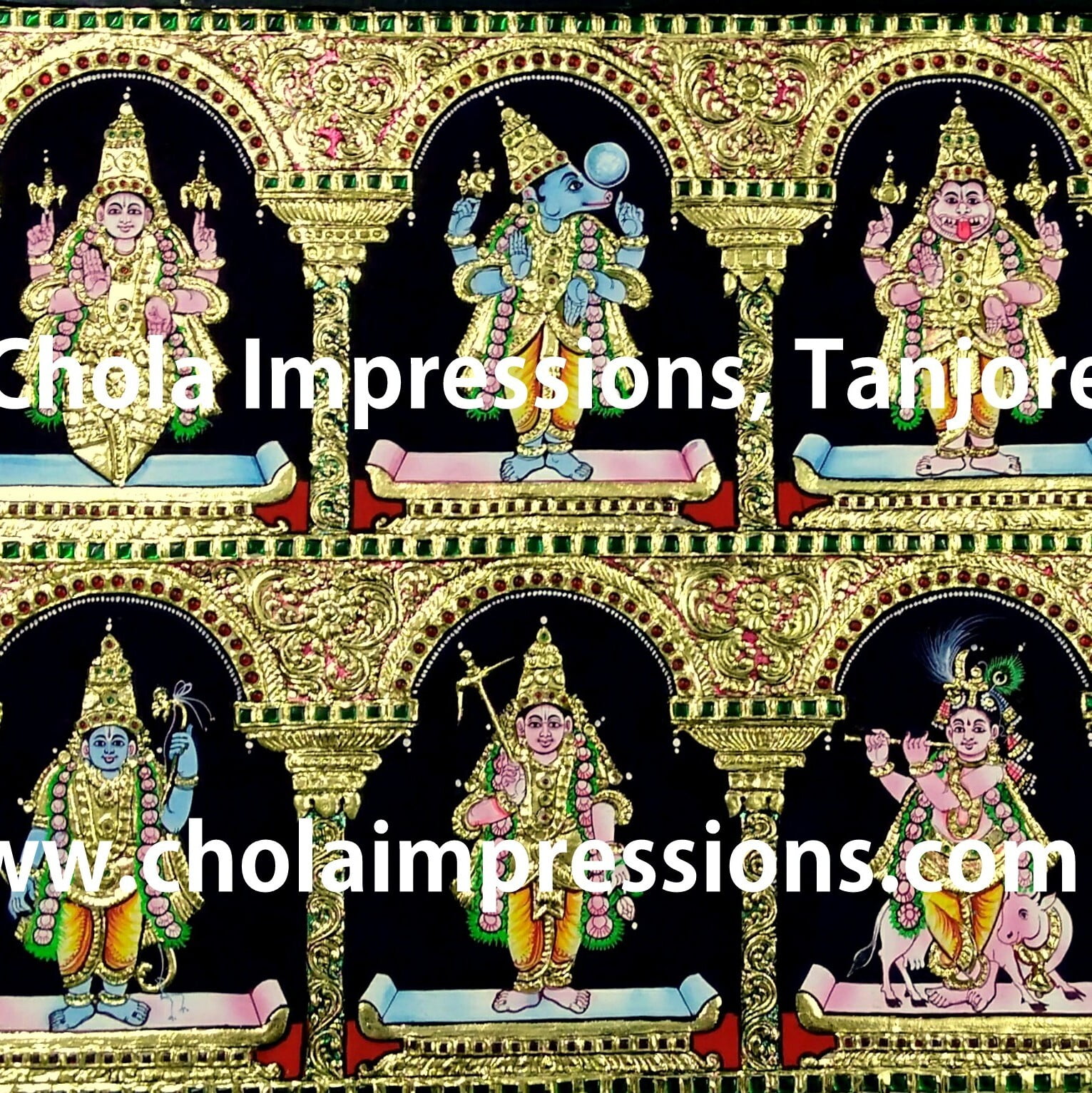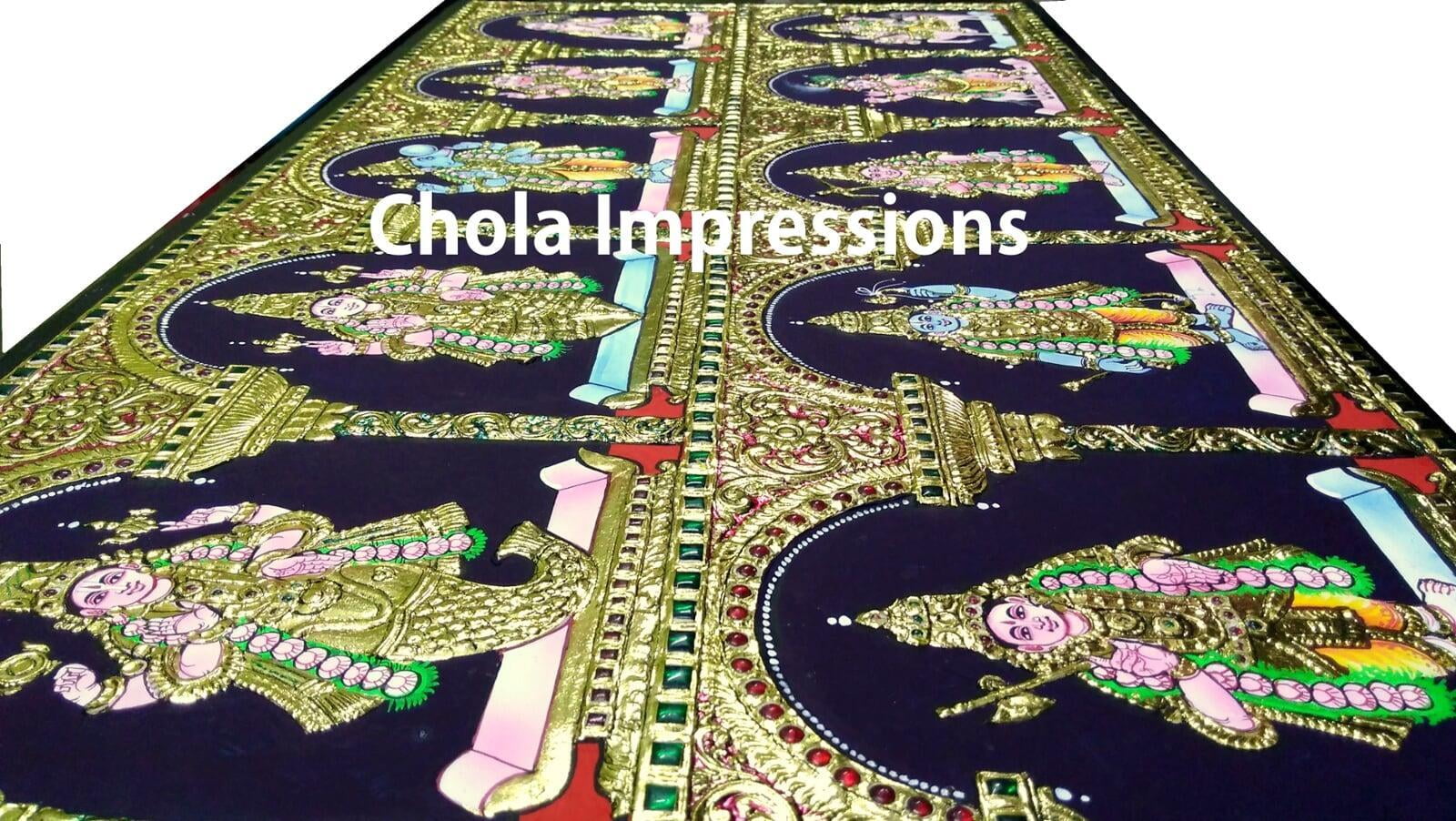Dhasavatharam or Dasavatar is a core theme in Indian & Hindu culture that teaches us countless things if observed closely
Yada yada hi dharmasya, glaanir bhavati Bharata
Abhyuddhanam adharmasya, tadaatmaanam srujamyaham
Lord Krishna addresses Arjuna - the Paandava prince and says, "Whenever and wherever there is a decline of dharma i.e righteousness and there is predominance of adharma, I descend Myself on to Earth during such time to protect dharma". This is the cornerstone of Sanatan Dharma which existed since time immemorial. When most of the regions were still inhabited by cavemen, the land of Bharat had churned out wisdom which is still being interpreted at various forums all over the world
This story eerily resembles the theory put forth by Darwin -the origin of species hardly 150 years ago. Some safely assume that the story portrays the evolution from aquatic to amphibian to a refined Human. And for some, it is the power of providence that has been preserving the life forms of the Earth since eons.
Lord Vishnu - Protector of the Universe
Order: Macha, Koorma, Varaha, Narasimha, Vamana, Parshurama, Rama, Balarama, Krishna & Kalki
The first four avatars of Vishnu appeared in Satya or Krita Yuga, the first of the four Yugas, also called 'The Golden Age', the next three in the second Yuga, the Treta Yuga, the two avatars after that appeared in the third Yuga, the Dwapara Yuga and tenth and last avatar will appear in the last Yuga, Kali Yuga. The time till completion for Kali Yuga is in 427,000 years. In the Vishnu Purana and the Bhagavata Purana, the Kali-yuga is described as ending with the appearance of Kalki, who will defeat the wicked, liberate the virtuous, and initiate a new Satya or Kalki Yuga.
Significance of Each Avatar
- Matsya, the fish, from the Satya Yuga. Vishnu takes the form of a fish to save Manu from the deluge (Pralaya), after which he takes his boat to the new world along with one of every species of plant and animal, gathered in a massive cyclone.
- Kurma, the tortoise, from the Satya Yuga. When the devas and asuras were churning the Ocean of milk in order to get Amrita, the nectar of immortality, the mount Mandara they were using as the churning staff started to sink and Vishnu took the form of a tortoise to bear the weight of the mountain.
- Varaha, the boar, from the Satya Yuga. He appeared to defeat Hiranyaksha, a demon who had taken the Earth, or Prithvi, and carried it to the bottom of what is described as the cosmic ocean(much like in ether theory) in the story. The battle between Varaha and Hiranyaksha is believed to have lasted for a thousand years, which the former finally won. Varaha carried the Earth out of the ocean between his tusks and restored it to its place in the universe.
- Narasimha, the half-man/half-lion, from the Satya Yuga. The rakshasa (Demon) Hiranyakashipu, the elder brother of Hiranyaksha, was granted a powerful boon from brahma, not allowing him to be killed by man or animal, inside or out, day or night, on earth or the stars, with a weapon either living or inanimate. Vishnu descended as an anthropomorphic incarnation, with the body of a man and head and claws of a lion. He then disembowels the rakshasa at the courtyard threshold of his house, at dusk, with his claws, while he lay on his thighs.
- Vamana, a dwarf, from the Treta Yuga. The fourth descendant of Hiranyakashyap, Bali, with devotion and penance was able to defeat Indra, the god of firmament. This humbled the other deities and extended his authority over the three worlds. The gods appealed to Vishnu for protection and he descended as a boy Vamana. During a yajna (यज्ञ) of the king, Vamana approached him and Bali promised him for whatever he asked. Vamana asked for three paces of land. Bali agreed, and the dwarf then changed his size to that of a giant. He stepped over heaven in his first stride, and the netherworld with the second. Bali realized that Vamana was Vishnu incarnate. In deference, the king offered his head as the third place for Vamana to place his foot. The avatar did so and thus granted Bali immortality. Then in appreciation to Bali and his grandfather Prahlada, Vamana made him ruler of Pathala, the netherworld.
- Parashurama, warrior with the axe, from the Treta Yuga. He is son of Jamadagni and Renuka and received an axe after a penance to Shiva. He is the first Brahmin-Kshatriya in Hinduism, or warrior-saint, with duties between a Brahmin and a Kshatriya. King Kartavirya Arjuna and his army visited the father of Parashurama at his ashram, and the saint was able to feed them with the divine cow Kamadhenu. The king demanded the cow, but Jamadagni refused. Enraged, the king took it by force and destroyed the ashram. Parashurama then killed the king at his palace and destroyed his army. In revenge, the sons of Kartavirya killed Jamadagni. Parashurama took a vow to kill every Kshatriya on earth twenty-one times over, and filled five lakes with their blood. Ultimately, his grandfather, rishi Rucheeka, appeared before him and made him halt. He is a Chiranjivi (immortal), and believed to be alive today in penance at Mahendragiri.
- Rama, the prince and king of Ayodhya, from the Treta Yuga. He is a commonly worshiped avatar in Hinduism, and is thought of as the ideal heroic man. His story is recounted in one of the most widely read scriptures of Hinduism, the Ramayana. While in exile from his own kingdom with his brother Lakshman and the God Hanuman, his wife Sita was abducted by the demon king of Lanka, Ravana. He travelled to Lanka, killed the demon king and saved Sita.
- Krishnawas the eighth son of Devaki and Vasudev, from the Dwapara Yuga. He is also a frequently worshiped deity in Hinduism and an avatar in Vaishnava belief. He appeared alongside his elder brother Balarama. Balarama is regarded generally as an avatar of Shesha.
- Balarama is included as the eighth avatar of Vishnu in the Sri Vaishnava lists, where Buddha is omitted and Krishna appears as the ninth avatar in this list. He may be particularly included in the lists, in circumstances where Krishna is removed and becomes the source of all avatars.
- Kalki ("Eternity", or "White Horse", or "Destroyer of Filth"), will be the final incarnation of Vishnu, foretold to appear at the end of Kali Yuga, our present epoch. He will be atop a white horse and his sword will be drawn, blazing like a comet. He is the harbinger of end time in Hindu eschatology, and will destroy all unrighteousness and evil at the end of Kali Yuga.
- These Dasavatharam paintings are our exclusive collection and have decorated many homes in India and the US
- A perfect artefact and wall hanging in the hall area to discuss showcase our rich culture to everyone
- A divine painting in the pooja room to worship and seek providence from the protector of the universe - Lord Vishnu



